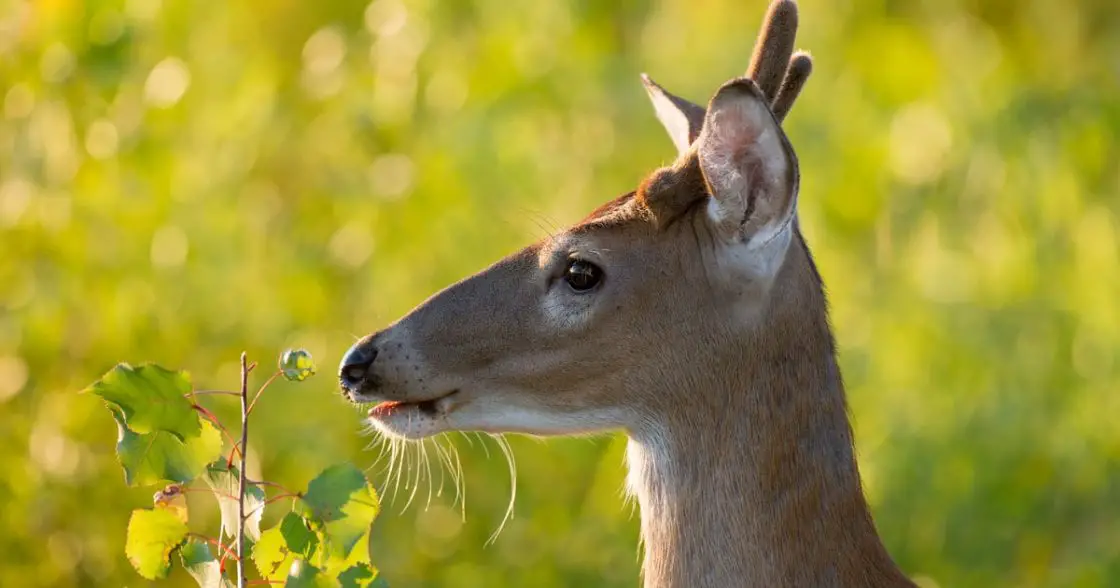Deer have plenty of features that help them survive in the wild. These features differ from one species to the next, and vary by age (for example fawns often have spots for camouflage, and bucks having antlers to use during the annual rut). But there is one thing that deer are born with that seems insignificant, but it’s an essential tool for their survival in the forest. Do deer have whiskers? What are their whiskers used for and how do they help a deer?
Let’s answer that question and explore the topic fully in this article.
Yes, deer do have whiskers on their chins and on the sides of their nose. These extra sensitive hairs increase the deer’s sense of smell significantly. This enhanced sense helps keep them safe from predators and find food to eat.
The following article is a more in depth explanation of why deer have whiskers and the purpose they serve in the wild.
Why Do Deer Have Whiskers?
The two main reasons that deer have whiskers are for smell and to help them eat. Whiskers, also known as vibrissae, give deer a very acute sense of smell.
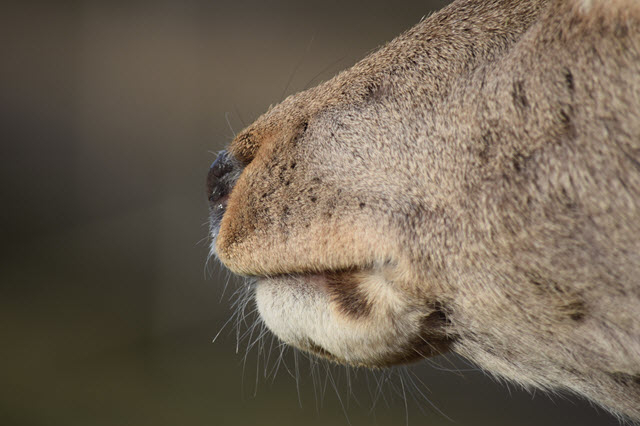
They have over 297 million smell receptors that make their sense of smell a third greater than dogs. When compared to humans, deer have over 800 times the amount of smell receptors that humans have.
The amount of smell receptors deer have in their whiskers makes smell a vital part of their survival. Whiskers help deer to feel their surroundings and gauge what’s going on around their mouth and nose.
They also help deer stay safe in the dark, such as when they’re looking for food or sleeping. Since seeing is no longer an option in the dark, a deer’s whiskers smell the air around them and provide them with information.
The most important information whiskers provide includes:
- Letting a deer know that a predator is nearby
- Informing a deer if they have strayed too far from the herd
- If there is food nearby
Whiskers are clearly an essential part of survival for a deer.
How Do Whiskers Help Deer Eat?
Whiskers help these animals eat by helping them differentiate between good food and poisonous food.
A deer’s whiskers are so sensitive that they can detect even the slightest changes in different foods, even if they came from the same general species.
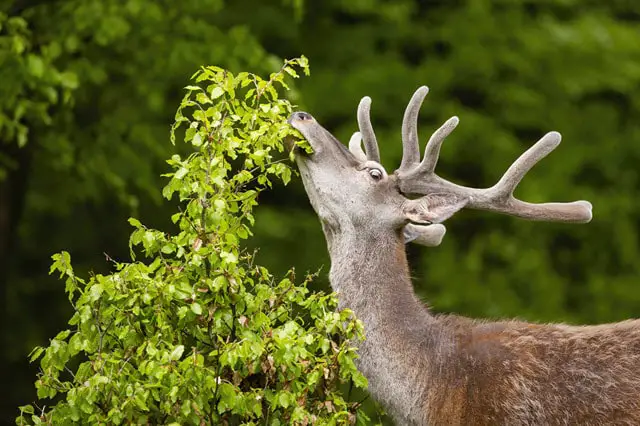
For example, berries are a large part of a wild deer’s diet. But not all berries are good, some of them are poisonous. To avoid sickness and even death, a deer’s whiskers smell when food is safe or not, thus eliminating that risk.
How Do Whiskers Help Deer Smell?
Whiskers have thousands of nerve cells embedded in them that relay important information to the deer.
When a whisker brushes up against something or senses something as the deer breathes, then the nerve cells take stock of information such as:
- What animal the smell belongs to
- What direction the animal that left the smell went
- Whether the animal is a threat or not
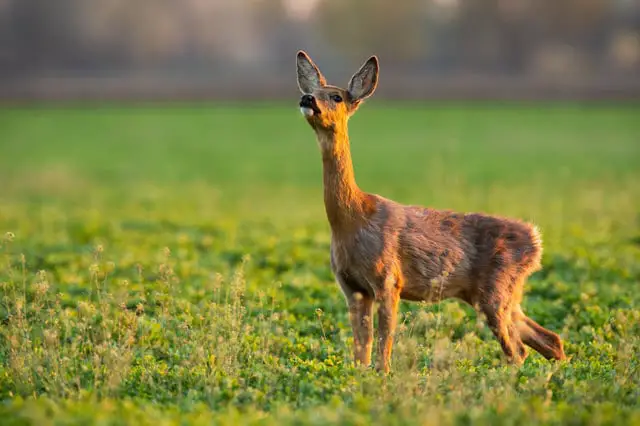
Deer then use this information to stay away from an area and to know if an area is safe and free from predators.
Because of their ability to gain valuable information about safety from only smelling something, whiskers are very important to a deer’s survival in the wild.
Do All Deer Have Whiskers?
Deer are in the mammal family of the animal kingdom, and most mammals have whiskers as a survival tool. As a result, all deer species have whiskers because it helps them survive in the wild.
Can A Deer Lose Its Whiskers?
It’s possible for a deer to lose its whiskers for multiple reasons, but the most common reason is deer hair loss syndrome, or DHLS.
The deer that are most affected by deer hair loss syndrome are adult females and fawns, but fawns experience the disease at a higher rate.
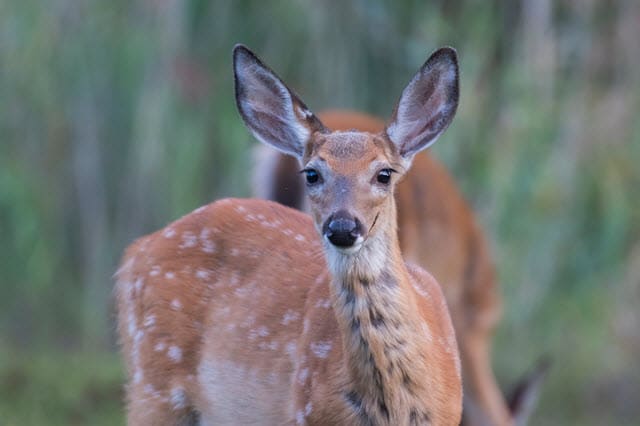
The first signs of deer hair loss syndrome are darker patches of hair on the deer’s body, and the hair might turn white or yellow. Whiskers usually turn yellow as the deer’s condition worsens.
The deer will also become increasingly thin and lethargic, with more hair falling off in multiple places, including its chin and nose whiskers. The main reasons a deer might get deer hair loss syndrome include:
- Rubbing up against fur that has lice
- Faulty immune system
- Muscle worm infection
It’s also possible for deer to survive this condition, and regrow their fur and whiskers. But the loss of whiskers can be very detrimental to a deer’s likelihood of survival.
What Happens When Deer Lose Their Whiskers?
A deer’s sense of smell is one of the main things that help it survive in the wild. When it loses that sense, it must rely on its other senses of hearing, sight, and smell to watch out for predators or find food to eat.
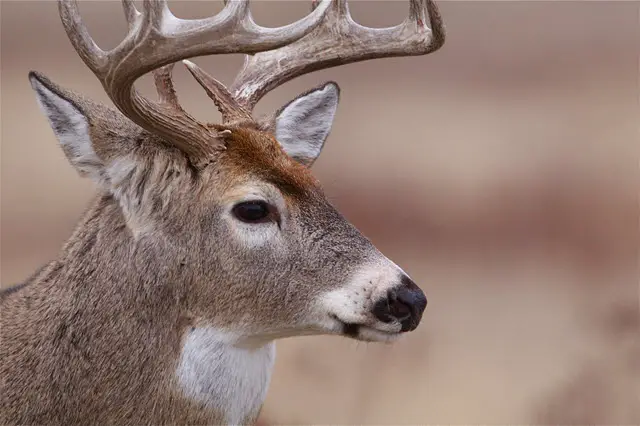
While their other senses are helpful, the sense of smell is often the strongest one a deer has. Without it, it could become unable to discern if a predator is nearby, and put itself in harm’s way or be unable to escape in time.
Furthermore, a deer needs a herd community to increase its chances of survival. The more deer that surround it, the safer it is from predators since there’s strength in numbers.
Each deer herd has a certain smell that helps differentiate it from other herds. If a deer can’t smell its herd, then it may wander away and get lost, making it more vulnerable to predators.
Lastly, a deer relies heavily on its sense of smell to determine which foods are good and which are poisonous. Without it, the deer may eat something harmful and die from poisonous mushrooms or berries.
Final Thoughts
Whiskers are a very useful tool that can help increase a deer’s chance of survival in the world. Their ability to smell is the most powerful sense a deer has, and they can use this sense in the day and night time to help detect threats to their survival.
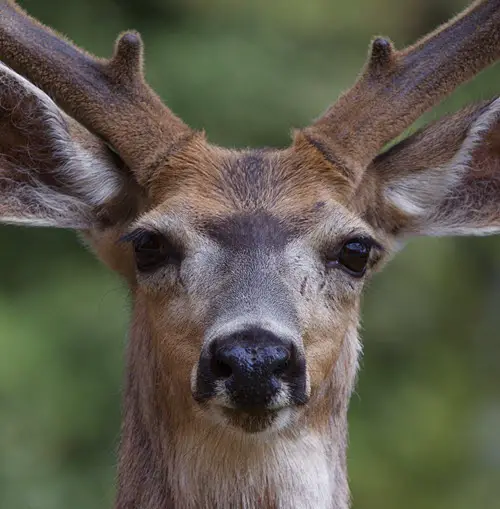
Whiskers have the ability to gain life saving information about the area a deer is in. This includes helping deer understand if a predator is near and what food is safe to eat.
If a deer were to lose their whiskers from deer hair loss syndrome or other diseases, it would decrease their chances of survival.

